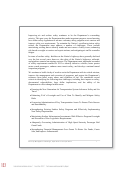Performance And Accountability Report - Fiscal Year 2013 - Federal Aviation Administration - U.s. Department Of Transportation Page 73
ADVERTISEMENT
 1
1  2
2  3
3  4
4  5
5  6
6  7
7  8
8  9
9  10
10  11
11  12
12  13
13  14
14  15
15  16
16  17
17  18
18  19
19  20
20  21
21  22
22  23
23  24
24  25
25  26
26  27
27  28
28  29
29  30
30  31
31  32
32  33
33  34
34  35
35  36
36  37
37  38
38  39
39  40
40  41
41  42
42  43
43  44
44  45
45  46
46  47
47  48
48  49
49  50
50  51
51  52
52  53
53  54
54  55
55  56
56  57
57  58
58  59
59  60
60  61
61  62
62  63
63  64
64  65
65  66
66  67
67  68
68  69
69  70
70  71
71  72
72  73
73  74
74  75
75  76
76  77
77  78
78  79
79  80
80  81
81  82
82  83
83  84
84  85
85  86
86  87
87  88
88  89
89  90
90  91
91  92
92  93
93  94
94  95
95  96
96  97
97  98
98  99
99  100
100  101
101  102
102  103
103  104
104  105
105  106
106  107
107  108
108  109
109  110
110  111
111  112
112  113
113  114
114  115
115  116
116  117
117  118
118  119
119  120
120  121
121  122
122  123
123  124
124  125
125  126
126  127
127  128
128  129
129  130
130  131
131  132
132  133
133  134
134  135
135  136
136  137
137  138
138  139
139  140
140  141
141  142
142  143
143  144
144  145
145  146
146  147
147  148
148  149
149  150
150 MESSAGE
A
from the
CHIEF FINANCIAL OFFICER
Mark House
Chief Financial Officer
This year, the Federal Aviation Administration continued to fulfill its primary mission of running the safest and most efficient
airspace in the world, despite an extremely challenging budget environment. The FAA provides a direct service to the public,
operating a huge, diverse, and complex system of equipment, facilities, and technologies that we call the national airspace
system. Most of our operating costs go toward staffing, operating, and maintaining the system. Budget cuts therefore have a
detrimental impact on the efficient operation of that system, while simultaneously hindering our ability to staff for our future
growth, invest in new equipment and technology, and repair our existing equipment and facilities. The cuts also jeopardize the
$1.3 trillion in economic activity and 10 million jobs that the aviation industry brings to our country.
Sequestration
The sequestration of more than $600 million from our FY 2013 budget, mandated by the Budget Control Act of 2011,
necessitated a reevaluation of our critical priorities, difficult cost-cutting measures, and a review of our business model for
providing services to the American public.
More than 70 percent of our operating costs are used to cover the salaries of our workforce—those serving the flying public,
including, for example, air traffic controllers and aviation inspectors. Thus, it is particularly challenging to reduce Operations
spending to the extent required by sequestration without correspondingly impacting the very workforce that serves the flying
public. To ensure that our top priority—aviation safety—was not compromised in this environment, we invested a tremendous
amount of time and resources in planning for the budget sequester. This included mining historical financial data; developing
alternative spending scenarios; and presenting realistic, data-driven options to support difficult decisions about spending.
As a result of these efforts, we implemented severe hiring restrictions and significantly reduced spending in non-pay areas
such as contracts, travel, training, and other day-to-day expenses. Considering the decreased purchasing power resulting from
inflation, we have substantially reduced our non-pay Operations spending by about 10 percent from FY 2010 levels. In response
to sequestration, we also adjusted the schedules of our highest priority capital projects—including the En Route Automation
and Modernization (ERAM) platform, foundational for our Next Generation Air Transportation System (NextGen) program—to
conserve funding.
Still, those reductions were not sufficient to cover the substantial sequestration cuts. As a last resort, we developed plans
to furlough more than 44,000 FAA employees for up to 11 days during the last five months of the fiscal year. Just one week
into implementation, however, Congress enacted the Reducing Flight Delays Act of 2013. This legislation enabled the FAA to
transfer $253 million in funding from our Airport Improvement Program to two other accounts: Operations, and Facilities and
Equipment, thus eliminating the need for furloughs and tower closures that would have caused widespread air traffic delays
71
|
|
Federal Aviation Administration
Fiscal Year 2013
Performance and Accountability Report
ADVERTISEMENT
0 votes
Related Articles
Related forms
Related Categories
Parent category: Business









